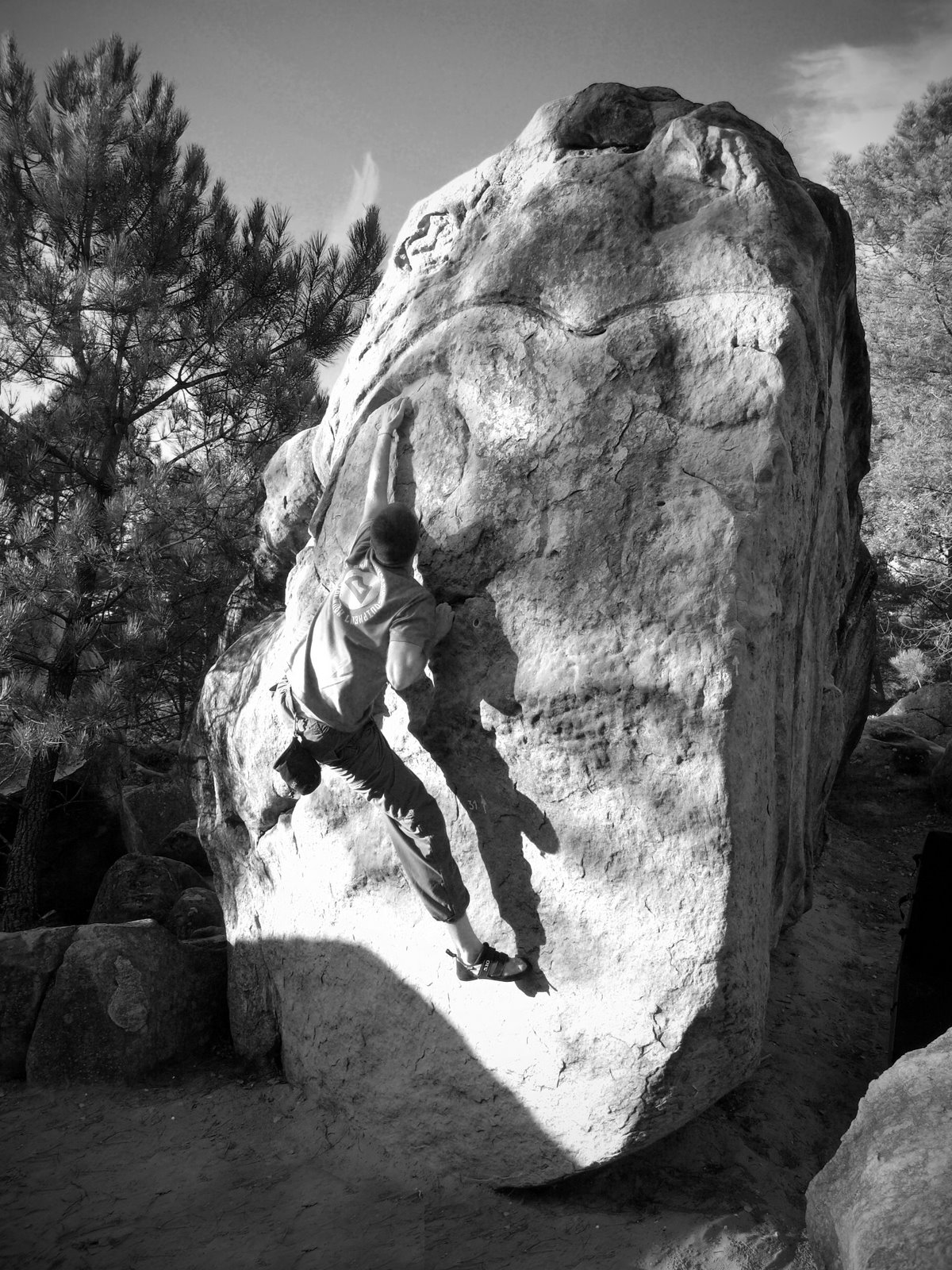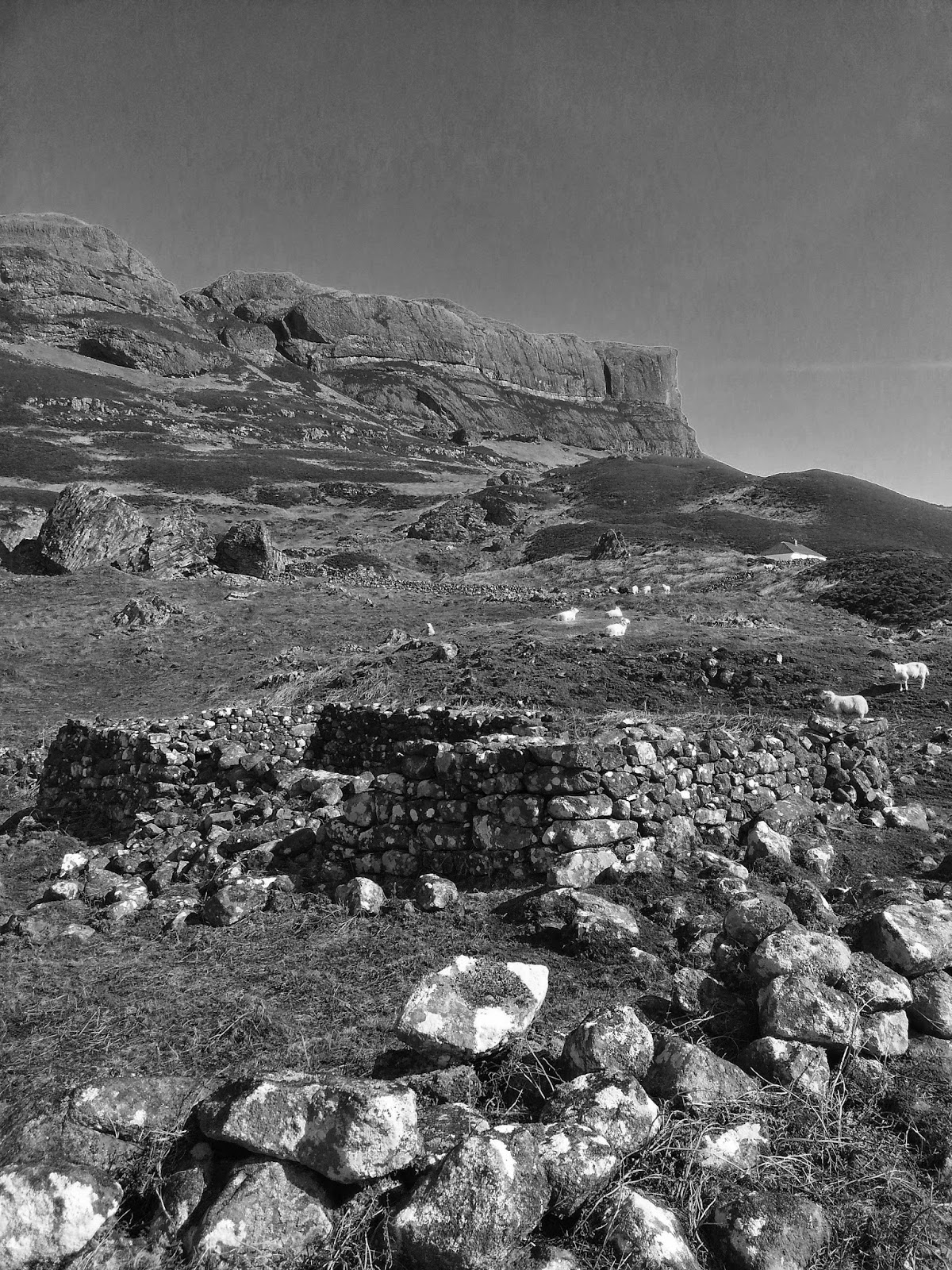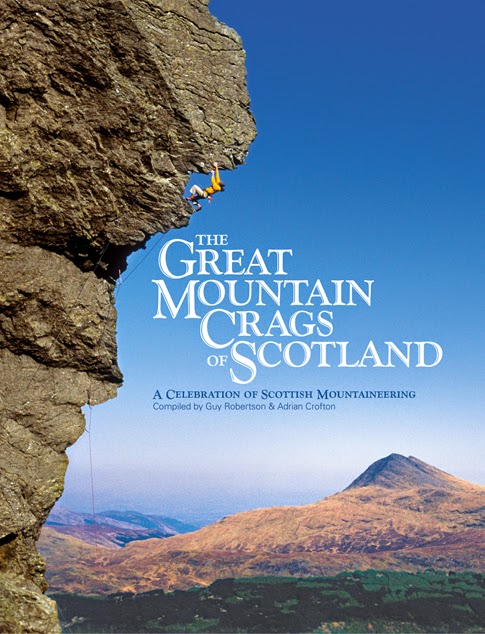Fontainebleau Redux
November may be autumn in the forest but it's a time of revival. Waking in the tent at 4am, I wriggle about in my cocoon a bit, wrapped in a chrysalis of decaying dreams. A rain of leaves whispers on the skin of the tent... the morning chill snapping them off the birches. I am beginning to go numb, so I crawl out, open the car and wipe my breath off the dashboard thermometer: -10 degrees.
Minus ten in the forest, a star-studded sky that's already going from black to purple with the promise of perfect egg blue at noon... everything is frozen: the olive oil a thick lime-green cake in a bottle, the water taps spilling out their clear mutant forms. I feel invigorated with hidden movement... the bouldering will be perfect. The stove roars up a protest against the silence and the coffee acts like oil for the diesel engine, we begin to throw our arms in circles to loosen shoulder tendons, crack fingers outwards, begin a slow rhythm of waking to the forest, an old friend... a place of limitless dreams and movement.
For a week we move through the forest silently, onsighting whatever problems look good, quietly conferring with parties of similar folk, swathed in golden rock and cold sunshine. Failure is never a disappointment and only a spur to move on, to keep moving, to absorb as much of the forest's circuitry and telemetry as possible. Fingers begin to grow steely and what was once hard feels open and accessible, bodies seem to grow into the stone's simple reasoning and movement becomes precise and economical, doing just enough and applying the purest equations of pressure and release.

This is the internal clockwork of Fontainebleau which ticks away in the long months of absence from this magical place, its memory a perpetual reflux of spinal memory: of throwing for sloping holds, of tensioning on crimps, of the body tightening round a sculpture of stone, or toes twisting on the faint squeak of friction... I come away from each visit reinvigorated, lighter spiritually, uncluttered and repaired by a simple landscape of tree and sand and stone...


